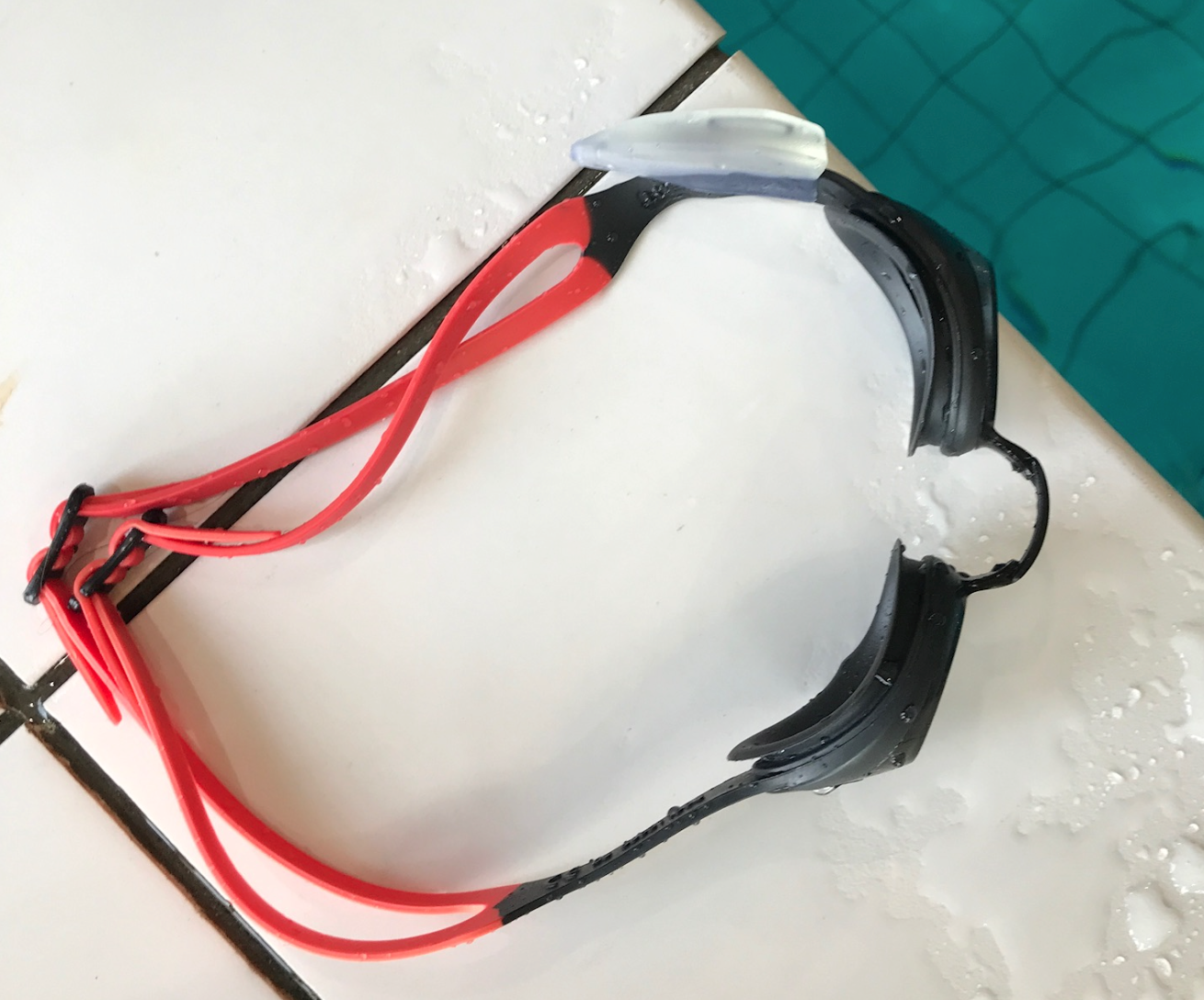
Objectives of the service
The system automates what a swim coach typically does with the stopwatch by using wireless wearable technology. On top of that, STARS will also register physiological output of the body next to the biomechanical performance. The biomechanical performance is measured by parameters such as stroke rate, split times and wall push off acceleration. The method of measuring physiological response is heart rate registration.
Measurements performed on the wrist and through chest straps are not desirable for a swimmer. The resistance of the water creates undesirable drag in this approach. Furthermore, the feel for the water is inhibited at these locations by using these measurement techniques. Feel for the water is an essential element in swimming which is key in performing an efficient swimming stroke. This is why the proposed activity will measure these parameters on the head of the athlete. This location allows for these parameters to be measured and is also a location where a swim cap and/or swimming goggles are worn. This is important to achieve better wearability because swimmers typically do not wear a lot of garments. By measuring on the head, the data is collected in a location where swimmers are used to wearing their gear without inhibiting feel for the water and without creating significant drag.

Users and their needs
The user needs and user requirements were evaluated through panel talks with different user groups. The user groups consisted of both swimmers and coaches and also were split up in groups between open water swimming and triathlon. The image below demonstrates the resulting buyer profiles or personas:

Service/ system concept
STARS will be a wearable wireless advanced activity tracker for ambitious swimmers and/or their coaches. The system collects both biomechanical as well as physiological information. The application will serve as many swimmers as possible, ranging from competitive pool swimmers to open water triathletes.
Technically, this means that several subsystems need to be implemented into an electronic system, which in turn needs to be inserted into a casing with high wearability for swimmers.
Multiple sensors will be integrated to measure the biomechanical information of the athletes. This data will be parametrized to information on breathing patterns, turns, stroke rates, pace and more.
Physiological feedback will be captured by a photoplethysmography (PPG) sensor. By capturing the reflection of light through the skin, the attenuation of light by the pulsation of blood through the blood vessels can be registered. This physiological information is key to understand the response of the athlete to a certain workout input.
The system will communicate externally through Bluetooth Low Energy (BLE). These communication protocols are typical standards to communicate with mobile devices for pairing and data transmission.

Space Added Value
An important user need is to be able to track swimming trajectory/distance in open water. Through GNSS technology, this service can be developed. GNSS technology is the most suitable technology available to track this as open water swimming is commonly performed in remote and open nature areas. This makes satellite navigation the go to technology.
Additional added value from space comes from Earth Observation and Spaceflight technologies. Throughout the further development of the project, these space assets will be integrated in to the product as to provide the highest possible value for coaches and athletes.
Current Status

The current status of the project is that the feasibility on both the technical and commercial level have been assessed. The system’s wearability has been tested with several swim teams and system functionalities have been acquired from both coaches and swimmers in both swimming and triathlon.
The kick-start study ran from October 2019 until June 2020. Users/customers were engaged, and requirements were collected. The solution was defined, and the technical feasibility was investigated, including a Proof of Concept. The commercial viability was analysed, and a business plan was defined.
The system architecture has been synthesized and the project is ready to go into the development of a demonstrator.



